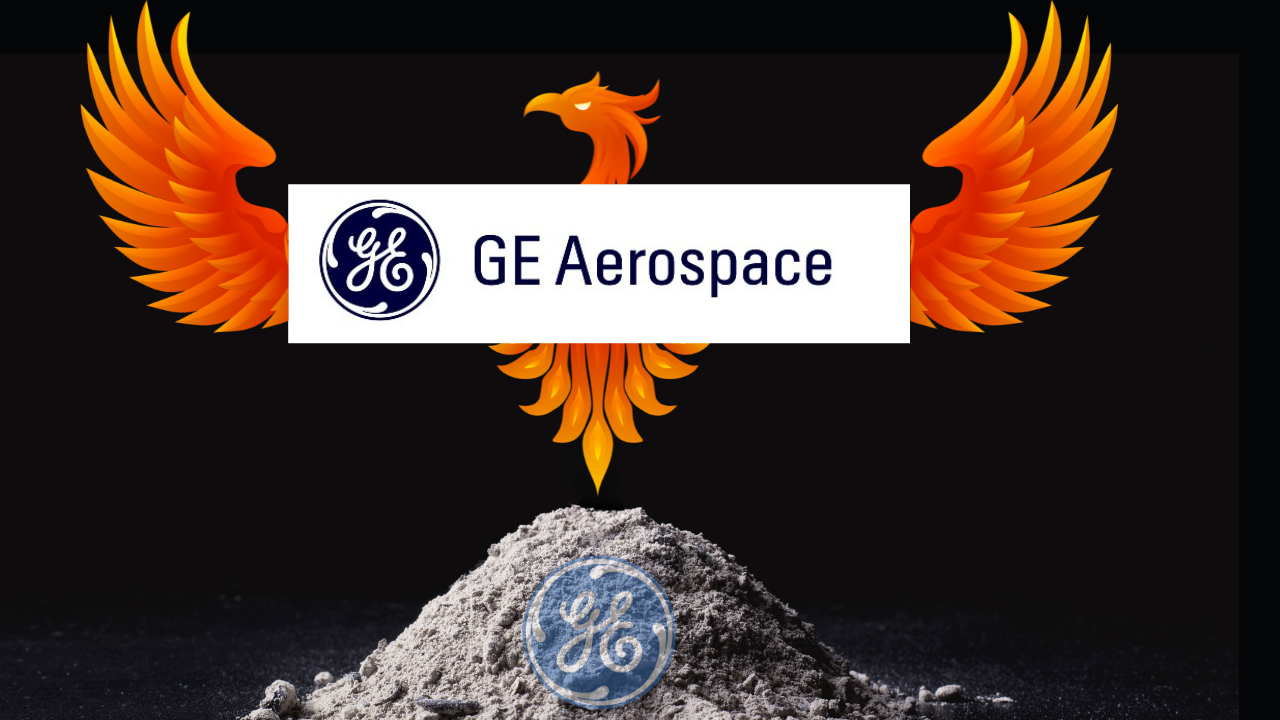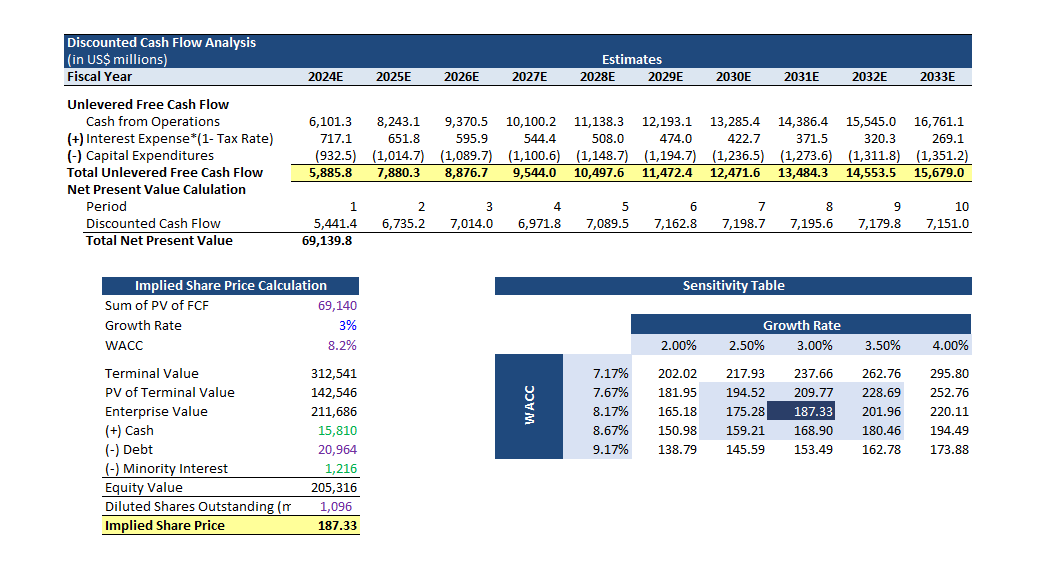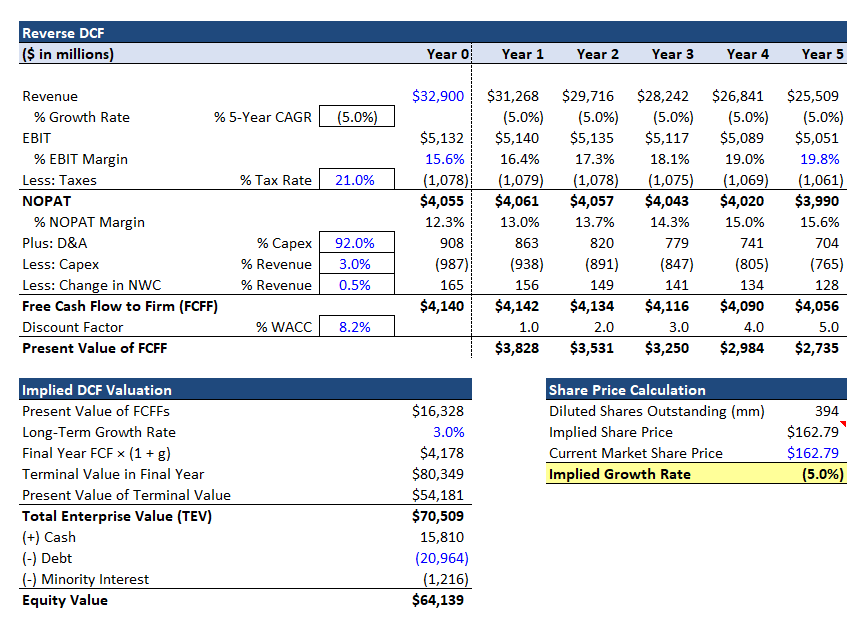Thomas Edison founded General Electric. Jack Welch built it into the world’s most valuable company. Then risky lending, the Great Financial Crisis, and mismanagement pushed the once great company towards extinction.
To save General Electric, the company would need to get smaller.
Larry Culp, the former CEO of Danaher, became GE’s latest CEO and embarked on a strategy of disgorging non-core businesses. He sold GE’s biopharma business to Danaher for $21 billion. Larry then merged GE’s jet leasing business with Aercap which allowed GE to shift some existing debt over to the new entity while retaining an equity stake in the new business.
The next step was to split General Electric up into three companies along its three main business divisions: Power, Healthcare, and Aerospace.
GE Healthcare Technologies (GEHC) was spun off first in January 2023. Then the Power and Aerospace businesses split in April 2024 to become GE Vernova (GEV) and GE Aerospace (GE).
All three businesses are attractive as standalone businesses; however, we see GE Aerospace as the best of the three.
Larry Culp agrees. He is staying on as GE Aerospace’s CEO.
Dividend History
Even though it retained the classic General Electric stock ticker, GE, GE Aerospace is a new company. The dividend history for the old General Electric does not apply to GE Aerospace. So, we classify GE Aerospace as a New Dividend Payer. These are companies that initiated a dividend within the last 5 years and have the opportunity to grow their dividend at above-average rates over the next 5-10 years.
On April 5, 2024, when GE Vernova and GE Aerospace officially split, GE Aerospace announced a 250% increase to its quarterly dividend. Its quarterly dividend went from $0.08 per share up to $0.28 per share.
Dividend Safety
GE Aerospace’s dividend is well covered and given its leading industry position and the long-term growth catalysts for jet engines, GE Aerospace should be able to continue to grow their dividend safely.
Quality Factors
High Barriers to Entry
Duopoly
The commercial jet engine business has two different end markets, wide-body jets (twin aisle) and narrow-body jets (single aisle).
Two companies dominate each end market. GE Aerospace and Rolls-Royce dominate wide-body engines. GE Aerospace and Pratt & Whitney dominate narrow-body engines.
Measured by its total engine install base of 40,000 plus commercial engines, GE Aerospace participates in about 75% of the commercial jet engine market.
It took years and massive capital investments in R&D and in manufacturing facilities by GE Aerospace to reach this position. It would be extremely cost-prohibitive for a new entrant to the jet engine market to compete for GE Aerospace’s business. Even if a potential competitor were able to raise the capital to build out their manufacturing capabilities, could they reach the same economies of scale that GE Aerospace has reached to make the effort economically worth it?
R&D
GE’s R&D spend has consistently produced stronger more fuel-efficient engines with impeccable safety ratings. It’s why GE Aerospace earned a leading position in jet engine manufacturing and it creates a self-reinforcing positive cycle.
GE’s leading manufacturing position gives it better economies of scale than its competitors leading to higher operating margins. This creates a virtuous cycle. Higher margins allow GE to reinvest more capital as a percentage of revenue back into R&D. The increased R&D allows GE to maintain its current market position and invest for future growth.
High Switching Costs
The jet engine business also comes with incredibly high switching costs.
Once an aircraft is configured to a specific engine, it is extremely difficult to switch to another engine brand. It requires major changes across the whole plane like the mounting pylon, the wiring and ducting, instrumentation, and avionics systems. The aircraft would be out of commission for a long time and every minute that plane is not flying it is losing money. It’s not financially worth it to change engines.
Airlines have built out their maintenance, repair, and overhaul (MRO) services to be as efficient as possible and focused on servicing as few jet engine types as possible. Not only would it be costly and time-consuming to switch engines on a plane, but it would also be costly to retool and reconfigure your MRO services.
If you’re a smaller jet engine maker trying to gain market share against GE Aerospace you have to wait for the next cycle of new aircraft to try and get your engines onto planes and into fleets. But then you face two more problems.
Long Operating life
Commercial jets and their engines are built to operate for 20+ years. If you're a competitor that wants to gain market share when the next airplane build cycle comes around, you’ll have to wait 20 years and continue to invest in R&D to ensure that your engine is a viable option.
Without an existing commercial engine business, it is tough to justify a 20-year cycle of investment with the hopes that your engine gains market share.
The last hurdle is GE Aerospace’s long track record of safety and your lack of one.
Safety
David Rubenstein: What is the most important issue when people buy jet engines?
Larry Culp: Safety. Safety. Safety.
A plane crash is one of the most visceral tragedies in the modern world. It’s not just the sudden massive loss of life but the fear it instills in all of us as would-be travelers.
Even if a crash were 100% out of an airline's control, they could still face a consumer backlash. Airlines already operate with thin profit margins and any consumer backlash could push the airline into the red. Airlines want the safest planes and the safest engines.
GE became the first company that designed its engines to be recognized by the FAA for its safety management systems.
And GE Aerospace has a long history of safe engine operations.
Does an airline put its entire operation at risk and switch to new jet engine maker or stay with a company with a long-proven track record of safe operations? GE’s multidecade track record of safety creates an incredibly high switching cost.
Catalysts
Narrow Body Plane Demand
New narrow-body jet engines like GE Aerospace’s LEAP are 15-20% more fuel efficient than older model engines.
Airlines are ordering new narrow-body planes with new fuel-efficient engines to replace older planes. The cost savings from operations alone justify the cost of a new plane.
The LEAP engine also provides more thrust than older models. More thrust with greater fuel efficiency allows narrow-body planes to fly further — and most importantly — profitably. This increases the connectivity between secondary and tertiary airports that might have been too far apart before. This opens up more routes for airlines to operate.
Transatlantic flights, 8+ hours, are dominated by wide-body jets but new narrow-body planes with newer engines can make the crossing. JetBlue wants to start flying to Europe from Boston and New York as they replace their older Airbus A320 & A321 planes with newer ones and newer engines.
Over the next 20 years, Boeing expects airlines to order over 42,000 new jets. Driven mostly by low-cost carriers and the narrow-body planes that they operate.
PARIS, June 18 (Reuters) - U.S. plane maker Boeing slightly raised its annual 20-year forecast for new jetliner deliveries, propelled by the strength of the narrow-body market fueled by demand from low-cost carriers.
Boeing expects airlines will need to buy 42,595 jets from now until 2042, up from 41,170 planes in its previous 20-year forecast last year.
LEAP engines are fairly new. They’ll soon be adding to GE service revenues over the coming years. Higher margin revenue. And the addition of so many narrow-body planes increases the potential future service revenue.
ROIC Growth
The jet engine business model is a higher-cost higher-tech version of the razor/razorblade model.
Jet engine manufacturers sell their engines at a big discount to earn long-term service contracts to maintain the engine. These contracts usually run for 15+ years. Servicing jet engines has higher margin revenue and generates higher returns on capital.
Right now the new LEAP engine accounts for a small percentage of shop visits. But as deliveries increase and LEAPs become a larger part of fleets the servicing revenue driven by LEAP engines will grow, increasing future operating margins and future returns on capital.
According to Michael Mauboussin and Dan Callahan, ROIC growth is a component of strong total shareholder returns.
Capital Return
The second component of strong shareholder returns from a growing ROIC is the weighted average cost of capital (WACC). If GE can maintain a consistent WACC — some things are out of its control like the risk-free rate — while growing its ROIC then this creates excess capital and free cash flow that GE can return to shareholders through increased dividends and share buybacks.
GE Aerospace’s management wants to return a minimum of 70% of its free cash flow to shareholders through dividends and share buybacks and 100% of free cash flow over the next 3 years.
Management initiated their capital allocation plan with a 250% dividend increase after spinning off GE Vernova.
Risks
Poor Product
Long-term service contracts for jet engines are great if the engine is good. Service contracts push the cost of maintenance and the liability back to the OEM.
If the engine is poorly built this increases the cost to service and repair the engine. What was once a potentially high-profit business is now potentially a money loser.
If GE’s LEAP engine turns out to be a poor product then the high service cost to maintain them will depress future profit margins and lead to a declining ROIC. As the table above shows, the worst returning stocks are those with declining ROICs.
Travel Decline
Travel demand is rising because there is still some pent-up demand leftover from the pandemic, a growing global populace with a desire to travel, and increasing global wealth allowing more people to afford to travel.
But if travel demand were to stagnate or decline this would decrease the need for new airplanes, which reduces the need for new jet engines that GE Aerospace manufactures. Also, fewer planes in operation would mean less need for the maintenance and servicing of existing engines which is a large part of GE Aerospace’s business and future profits.
Valuation
Our fair value estimate based on a discounted cash flow model is $187 per share.
But we also want to understand what expectations the market is pricing in today by using a reverse DCF.
We expect GE Aerospace’s EBIT margins to improve from 15% to 20% as it continues to improve and streamline operations and as higher margin service revenues for its LEAP engines grow. But at today’s price, it appears the market is not pricing in margin expansion because revenue growth is not needed to justify today’s price. The reverse DCF above shows negative 5 year CAGR revenue growth is needed to justify today’s share price if EBIT margins expand from 15% to 20%.
Even though GE Aerospace may look expensive based on a P/E ratio and when comparing it to similar companies, it appears the market is not giving enough credit to GE’s potential margin expansion and growing demand for its newer more fuel-efficient jet engines.
Disclaimer
American Money Management, LLC (AMM) is a SEC registered investment advisor who serves as a portfolio manager to private accounts. AMM partners, associates, employees and clients of the firm may buy or sell investments mentioned without prior notice. This report should not be considered investment advice and is for educational purposes only. The opinions expressed do not constitute a recommendation to buy or sell securities. Investing involves risks, and you should consult your own investment advisor, attorney, or accountant before investing in anything. Current stock quotes are obtained at Yahoo! Finance. Prices are as of the close of the market on the date for which the price is referenced.








